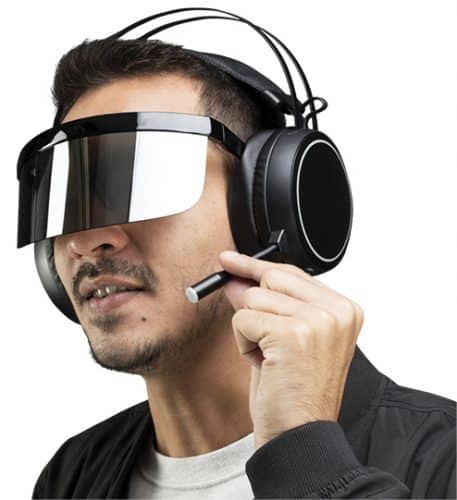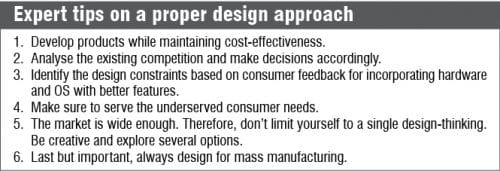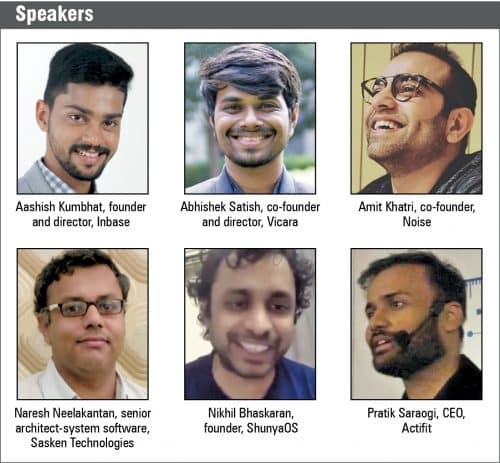Since their introduction, wearables have taken over our lives by storm, helping us monitor daily activities in our busy schedules. And although many hurdles lie ahead for developing high-end devices, there are feasible solutions as well. They just need meticulous implementation.

Wearables were primarily launched as fitness trackers to estimate the number of steps or detect the number of calories burnt. But these are not equivalent to gauging precise fitness levels. This has led to a demand for equipping wearables with data computation and better algorithms to cater to improved health monitoring. We now wish to know how much we slept last night among other physical activities. Therefore, several sensors such as ECG sensor, SpO2 sensor, and temperature sensor have been incorporated that make these devices smarter.
Watches have been a part of our lifestyle for ages. The current market trend suggests that people prefer to go for new and updated smartwatch models. Consequently, there is a big market scope for wearables, especially smartwatches.
“It is just the beginning of a new era. There’s a lot of potential. It’s just that we need to figure out the right product and more affordability options that will embolden us to give competition to any of the big brands out there,” says Aashish Kumbhat, founder and director, Inbase.
Design challenges
In the Indian market, price is a huge challenge. Besides adding new features, one needs to get the price right. And that means getting the technology right.
“The better your technology, the less hardware you need,” says Nikhil Bhaskaran, founder of ShunyaOS. “And the less hardware you need, the less expensive your product becomes.”
With respect to the operating system, standardisation needs to take place both on microprocessor and microcontroller fronts.
Then there is the question of optimum power consumption for longer battery life. This becomes even more pertinent as the next-gen devices are going to be slimmer and packed with many features that will require intense processing power.
“We need to work towards making such devices more and more intuitively smarter. Although we have access to the required hardware, there is a shortage of design houses that can power pack all the components to deliver the right kind of output,” says Amit Khatri, co-founder, Noise.
“Hardware, software, and post-data processing are the three areas to be worked on.”
Lack of ecosystem
As Nikhil Bhaskaran points out, large scale collaborations need to take place rather than working individually on projects related to electronic designing.
“There is a lack of an ecosystem having no collaboration. If we are able to develop a platform, where knowledge sharing happens, then it will give lots of opportunities to people and also reduce costs of procuring materials from abroad,” says Aashish Kumbhat.
Recounting the earlier days of starting his company, Pratik Saraogi, CEO of Actifit, says they were filled with lots of struggle—from acquiring suitable PCBs to months of product development. All this makes the scarcity of large-scale manufacturing all the more glaring.
Global market challenges
Closely related to the above is the issue of developing exceptional prototypes and then trying to compete with companies based in the US, Singapore, etc. Companies in these countries are already developing quality products. So if you do not have high-skill prototypes, it is challenging to sell the finished products.
“We need to have a base ecosystem that allows you to reach a high-fidelity prototype,” says Abhishek Satish, co-founder and director of Vicara.
All the above challenges boil down to the fact that large scale collaborations, involving people from both the tech and business sides, do not happen. Tech needs to follow business and not the other way around.

What can help?
It is really helpful if one can have a qualified contract manufacturer to oversee the coordination between you and the manufacturing process.
Another news of respite is that the smart device market will continue to grow. Even if it takes many years, eventually the wearable space will overtake the smartphone market. To reach that level, people, particularly Indians, should focus on capturing mass quantity to generate enough revenue. This in turn will enable the production of high-class products at low cost.
“As long as there is hardware involved, volumes matter a lot,” says Nikhil Bhaskaran.
Speaking on the same subject, Pratik Saraogi maintains that besides hardware and software, wearables also incorporate firmware that includes stringent designing and complex processing. And it seems a mass market exists for people who are actively into fitness and exercising. To leverage this, smart wearables can be incorporated with better algorithms having functional designs that fulfil various requirements.
From a tech perspective, a huge amount of integration between different technologies will happen. Soon a camera-enabled microprocessor will be available that will be able to perform the functions of a sensor.

New set of emerging wearables
The wearable market is much beyond Fitbits, as hearables and eyewear also belong to the family. In future, besides providing data, these devices will control all aspects of our life. Therefore, truly wireless devices have to be enabled with AI. To achieve that, there has to be a need for working on a common stack/chipset and then build use cases around it. Also to mention are human-machine interface (HMI) devices in the industry.
The MTK2503 chipset that supports interactive features for GPS movement, speed, distance, heart rate, and many more has dominated the lower-end of the market.
“You never know. The next generation of truly wireless might have 4G connectivity where you can just talk with them. Work is going on in building an MP3 player in earwear so that there is no need to carry your phone when you go outside,” says Amit Khatri.
It is also believed that the next generation of watches will have many smart features. So rather than buying new sets of watches, people can simply change the outer case, with the inner chip remaining intact. This will not only save expenditure but also retain the usefulness and power of the same chip. To achieve this, the OS must be small yet powerful enough to interact with everyone—be it industrial or home application devices.
“We are looking at smart apparels, muscle simulation technology, and devices that can gather respiratory and heart-rates,” says Pratik Saraogi, CEO, Actofit. “We are also looking at EMG and EMS sensors that simulate muscle groups during workouts. And these will come all under the category of wearables.”
Capattery, a next-gen super-fast battery charging company, is making solutions that allow a battery to be charged within a few seconds (in contrast to Li-Ion/LiPo battery that takes approximately thirty minutes to charge a wearable). This implies that a 5000mAh mobile phone can be charged in less than two minutes.
Power of gestures
Voice recognition has been there longer than gesture recognition. But it is hard to imagine people going around and speaking to their devices to perform certain actions.
Another challenge voice recognition has is the complexity of interpreting languages and dialects that vary from culture to culture. Gestures, however, seem to be more universal in that sense. For example, if you point your fingers upwards, it will always mean the same to everyone, that is, to go up—regardless of the language you speak.
“Gesture recognition is much more universal in its appeal and reach,” says Abhishek Satish. He further adds that there are certain challenges with respect to it as well since a sensor or an image processing device is required to be connected to your hand, which consumes a lot of power. At the end of the day, battery technology will determine how gestures are used for communication.
In short, AI-based gesture recognition devices will outweigh all other kinds in the future.
And as stated by Atul Khatri, if your design is not viable, then there is no point in selling as it will have no takers. One needs to make a technology that is commercially acceptable by consumers.
The Indian government, through its Make In India programme, is enabling a vision wherein goods are manufactured locally, leading to cost-effectiveness in production and thus saving enormous amounts of money. The government is also rolling out a PLI (production linked incentive) scheme, which is specifically targeted to smart wearables manufacturing. With that coming in, it will be a big boost for the Indian industry and help put them on a global pedestal.
Multiple design opportunities
Some of the points corresponding to both Indian and global spaces are:
- Tackle various markets differently. For instance, setting the right price plays an important role in an Indian context in contrast to the USA where integration with other devices is preferred.
- Be specific to the needs of the consumer. Indian consumption and usage patterns are different from other parts of the world.
- People are more inclined towards the experience they receive from a product rather than its functionality. Go for the former.

In conclusion, the technological challenges with regards to hardware and software are growing. On top of that, consumer demands are also changing. All of this has made the wearable design a bit daunting. But it has also opened up new possibilities and new markets to discover. And thanks to the government initiatives, the obstacles will soon be surpassed.
This article is based on the panel discussion ‘Design Challenges around Smart Wearables and Solutions’ that took place during January edition of Tech World Congress 2021. The panel was chaired by Naresh Neelakantan, senior architect-system software at Sasken Technologies.






